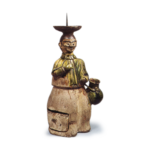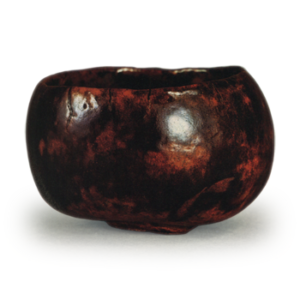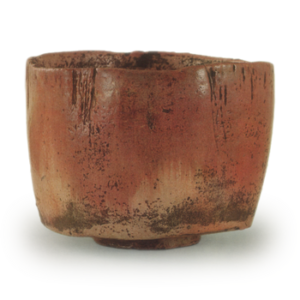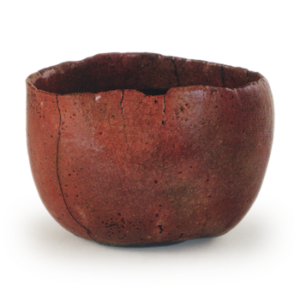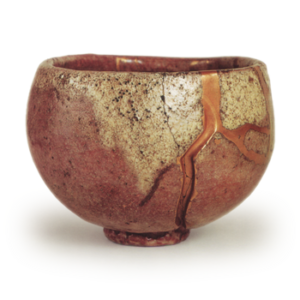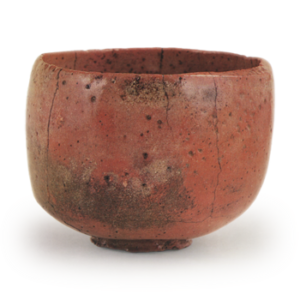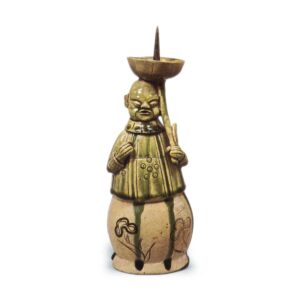
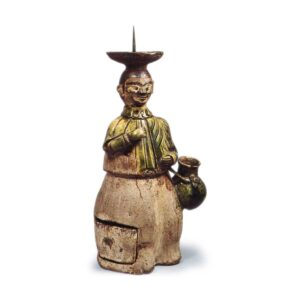
This is a candlestick made by the Portuguese, or as the Momoyama people called them, the Nanbans. Oribe ware is often characterized by the early adoption of foreign designs, such as cruciform and Nanban patterns, and their incorporation into the designs. These candlesticks are the most prominent examples, and the idea of capturing the bizarre customs and making them into candlesticks is truly interesting. Figure 120 shows a male figure wearing a light hakama (hakama), painted with a floral design on the hakama, and covered with a green glaze that extends from the vessel of the candlestick to the figure’s waist, running along five lines to the hem. Five plum bowl patterns are shown in a circular pattern on the front and back of the upper garment. Figure 121 shows a rust-glazed head, eyebrows and eyes, a chrysanthemum flower mark on the collar of the upper garment, and a basket in the left hand. The sides of the light hakimono have been cut off and a drawer has been added, perhaps to hold firewood. These two are the best of the surviving Namban candlesticks.

